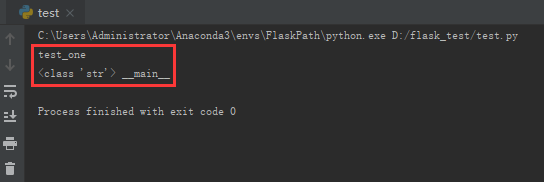Python中关键字nonlocal和global的声明与解析
一、Python中global与nonlocal 声明
如下代码
a = 10 def foo(): a = 100
执行foo() 结果 a 还是10
函数中对变量的赋值,变量始终绑定到该函数的局部命名空间,使用global 语句可以改变这种行为。
>>> a 10 >>> def foo(): ... global a ... a = 100 ... >>> a 10 >>> foo() >>> a 100
解析名称时首先检查局部作用域,然后由内而外一层层检查外部嵌套函数定义的作用域,如找不到搜索全局命令空间和内置命名空间。
尽管可以层层向外(上)查找变量,但是! ..python2 只支持最里层作用域(局部变量)和全局命令空间(gloabl),也就是说内部函数不能给定义在外部函数中的局部变量重新赋值,比如下面代码是不起作用的
def countdown(start): n = start def decrement(): n -= 1
python2 中,解决方法可以是是把修改值放到列表或字典中,python3 中,可以使用nonlocal 声明完成修改
def countdown(start): n = start def decrement(): nonlocal n n -= 1
二、Python nonlocal 与 global 关键字解析
nonlocal
首先,要明确 nonlocal 关键字是定义在闭包里面的。请看以下代码:
x = 0
def outer():
x = 1
def inner():
x = 2
print("inner:", x)
inner()
print("outer:", x)
outer()
print("global:", x)
结果
# inner: 2 # outer: 1 # global: 0
现在,在闭包里面加入nonlocal关键字进行声明:
x = 0
def outer():
x = 1
def inner():
nonlocal x
x = 2
print("inner:", x)
inner()
print("outer:", x)
outer()
print("global:", x)
结果
# inner: 2 # outer: 2 # global: 0
看到区别了么?这是一个函数里面再嵌套了一个函数。当使用 nonlocal 时,就声明了该变量不只在嵌套函数inner()里面
才有效, 而是在整个大函数里面都有效。
global
还是一样,看一个例子:
x = 0
def outer():
x = 1
def inner():
global x
x = 2
print("inner:", x)
inner()
print("outer:", x)
outer()
print("global:", x)
结果
# inner: 2 # outer: 1 # global: 2
global 是对整个环境下的变量起作用,而不是对函数类的变量起作用。
总结
以上就是这篇文章的全部内容了,希望本文的内容对大家的学习或者工作能带来一定的帮助,如果有疑问大家可以留言交流,谢谢大家对【听图阁-专注于Python设计】的支持。


